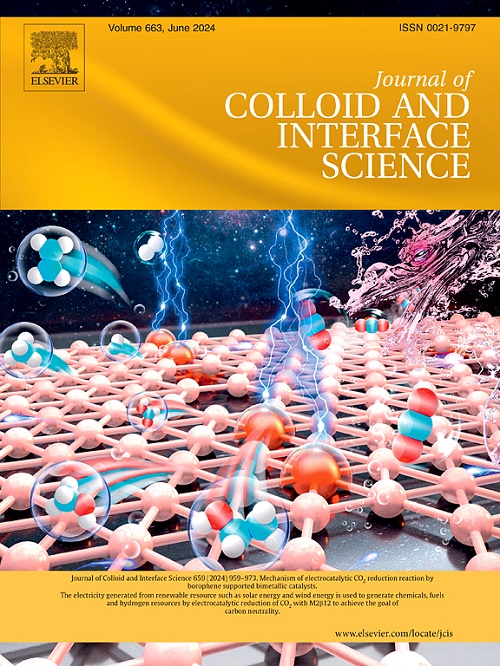Spin regulation and magnetohydrodynamic effects driven novel magnetic field-assisted LiO2 battery
IF 9.7
1区 化学
Q1 CHEMISTRY, PHYSICAL
引用次数: 0
Abstract
Lithium‑oxygen battery (LOB) has attracted great interest due to its ultra-high theoretical specific capacity. However, the practical application of the LOB is obstructed by the high kinetic barriers and large overpotentials. Hence, a novel magnetic field assisted LOB (MF-LOB) is developed with ferromagnetic FeCo2O4 nanowires as catalyst that can improve the ORR and OER kinetics through the application of a moderate magnetic field. The FeCo2O4 nanowires are magnetized into nanomagnets with high spin polarization under a magnetic field, which is beneficial to the adsorption of O2-intermediates and transfer of electrons. Equally, the MHD effect contributes to the mass transport and diffusion including O2 and Li+. The generation and oxidation of Li2O2 are promoted for the MF-LOB based on FeCo2O4 nanowires due to the high spin polarization and MHD effect. The MF-LOB based on FeCo2O4 nanowires shows a lower overpotential of 0.89 V and longer cycle life of 150 cycles than those (1.22 V and 53 cycles) of the LOB without the magnetic field. This unique in-situ magnetic enhancement strategy for optimizing catalyst performance provides a new idea for the development of high-performance external field assisted LOBs.

自旋调节和磁流体动力学效应驱动的新型磁场辅助锂电池
锂氧电池(LOB)由于其超高的理论比容量而引起了人们的极大兴趣。然而,高动力学势垒和大过电位阻碍了LOB的实际应用。因此,以铁磁FeCo2O4纳米线为催化剂,开发了一种新型的磁场辅助LOB (MF-LOB),通过施加适度的磁场,可以改善ORR和OER动力学。将FeCo2O4纳米线在磁场作用下磁化成具有高自旋极化的纳米磁体,有利于o2中间体的吸附和电子的转移。同样,MHD效应也有助于O2和Li+等物质的传递和扩散。由于FeCo2O4纳米线的高自旋极化和MHD效应,促进了Li2O2的生成和氧化。基于FeCo2O4纳米线的MF-LOB的过电位为0.89 V,比无磁场的LOB的过电位为1.22 V,循环寿命为53次,循环寿命为150次。这种独特的原位磁增强策略优化催化剂性能,为开发高性能外场辅助lob提供了新的思路。
本文章由计算机程序翻译,如有差异,请以英文原文为准。
求助全文
约1分钟内获得全文
求助全文
来源期刊
CiteScore
16.10
自引率
7.10%
发文量
2568
审稿时长
2 months
期刊介绍:
The Journal of Colloid and Interface Science publishes original research findings on the fundamental principles of colloid and interface science, as well as innovative applications in various fields. The criteria for publication include impact, quality, novelty, and originality.
Emphasis:
The journal emphasizes fundamental scientific innovation within the following categories:
A.Colloidal Materials and Nanomaterials
B.Soft Colloidal and Self-Assembly Systems
C.Adsorption, Catalysis, and Electrochemistry
D.Interfacial Processes, Capillarity, and Wetting
E.Biomaterials and Nanomedicine
F.Energy Conversion and Storage, and Environmental Technologies

 求助内容:
求助内容: 应助结果提醒方式:
应助结果提醒方式:


